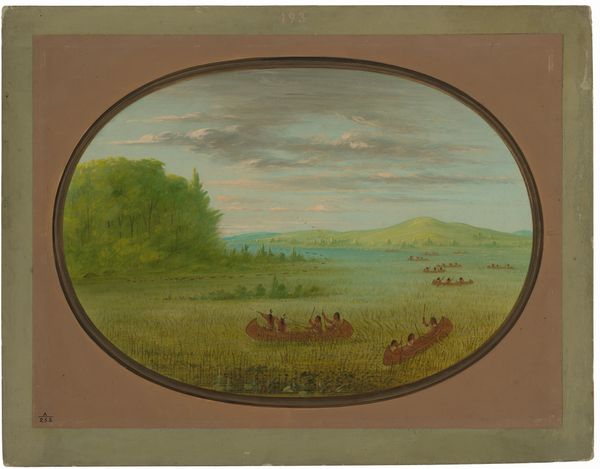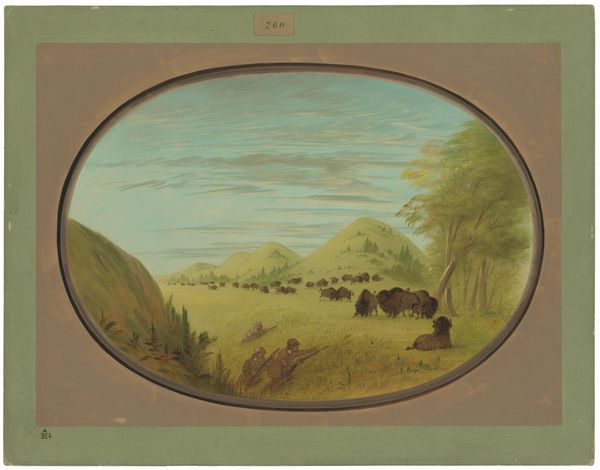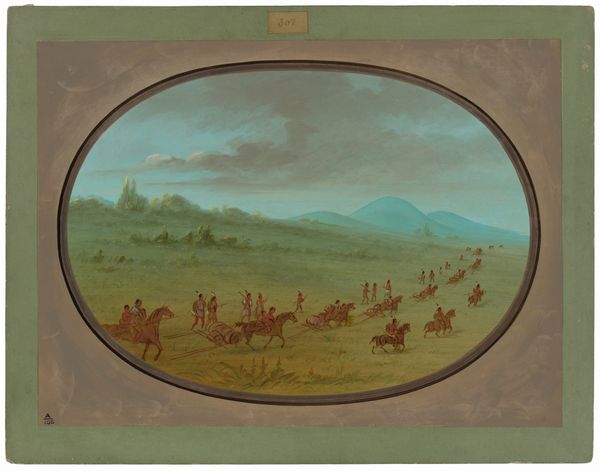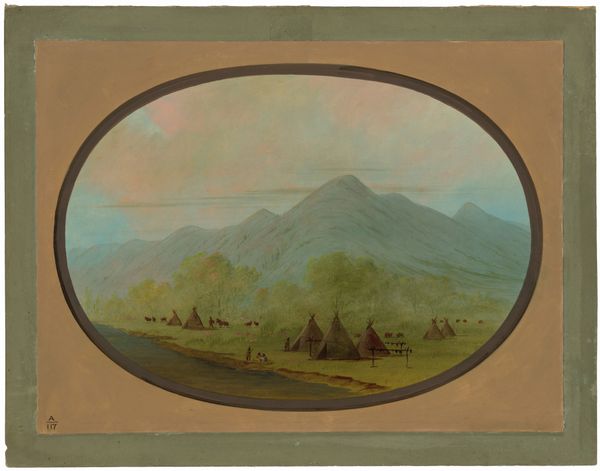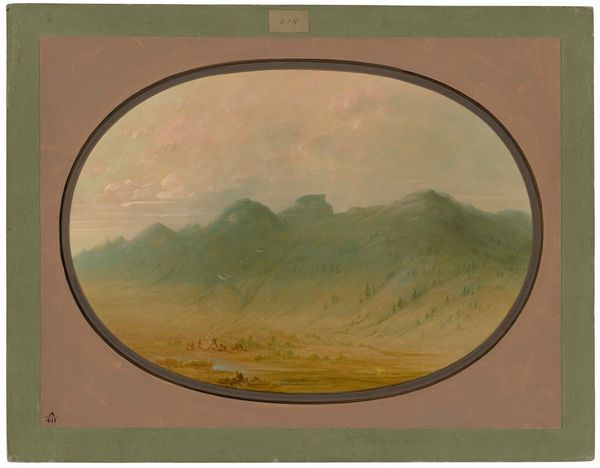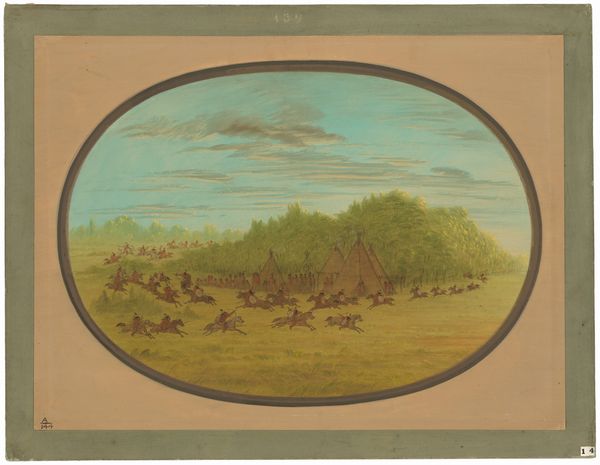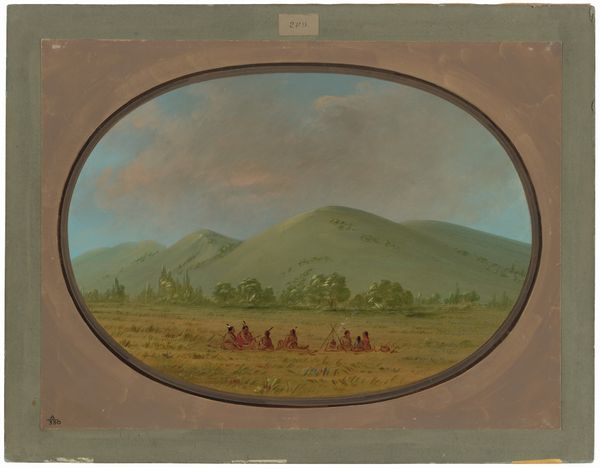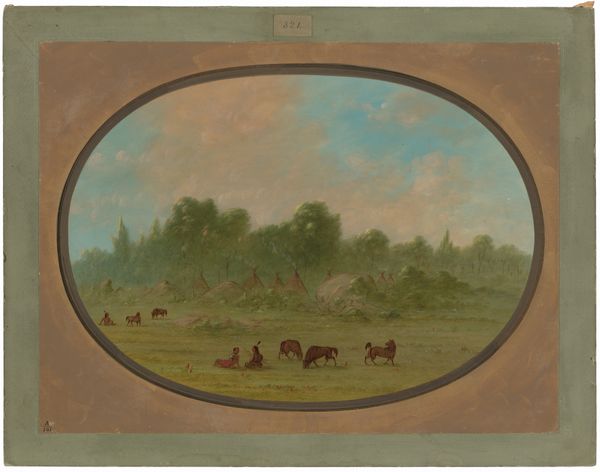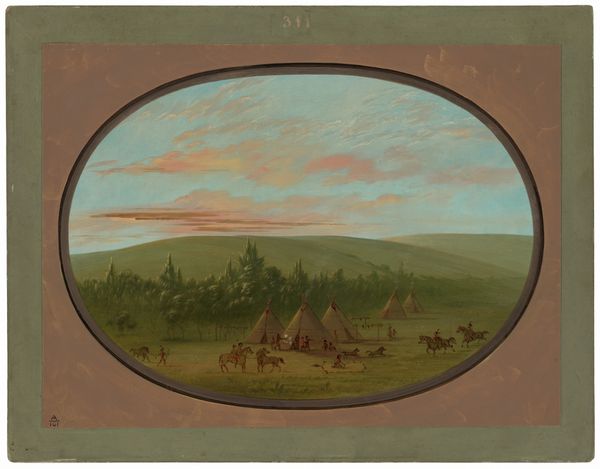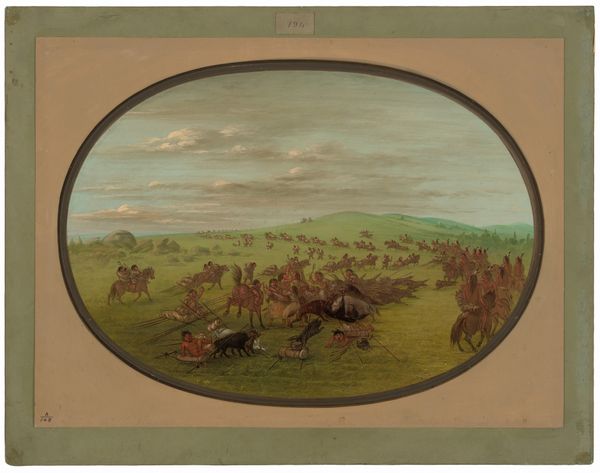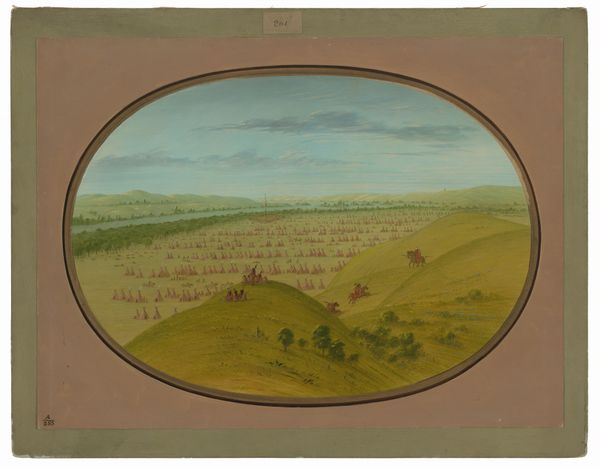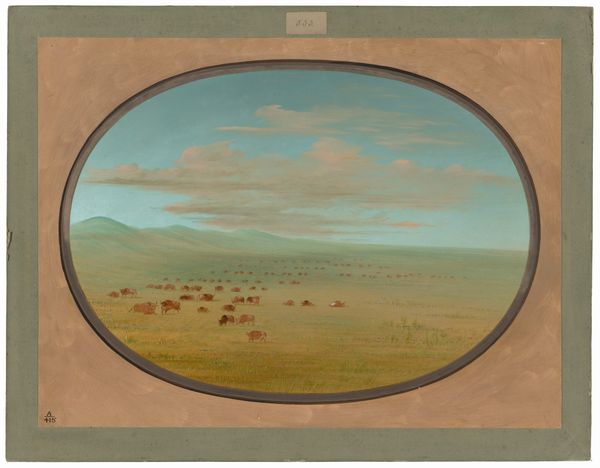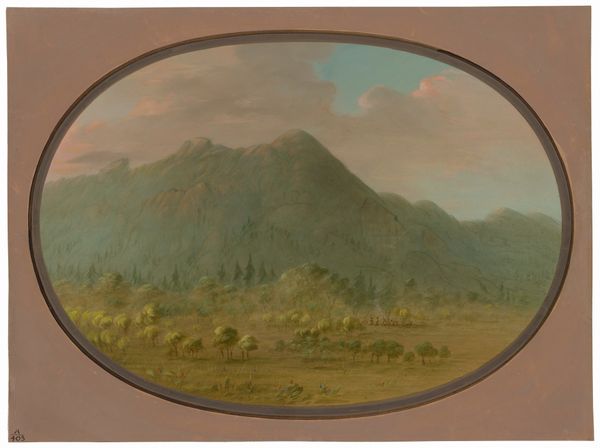
painting, gouache
#
water colours
#
painting
#
gouache
#
landscape
#
oil painting
#
coloured pencil
Dimensions: overall: 46.5 x 62.2 cm (18 5/16 x 24 1/2 in.)
Copyright: National Gallery of Art: CC0 1.0
Curator: Before us, we have George Catlin’s watercolor and colored pencil rendering of "Falls of the Snake River," created between 1855 and 1869. Editor: My initial feeling is of serenity, a romantic quietude. The subdued palette evokes a contemplative mood. It almost feels like viewing a faded memory. Curator: The subdued palette contributes to the painting's structure, subtly delineating the receding planes of space. The artist has cleverly used the muted tones to give us depth through atmospheric perspective. Editor: The waterfall itself carries significant symbolic weight. Water is often seen as a life-giving force, a source of renewal, and in this context, suggests a harmonious relationship between the Native Americans depicted here and their land. Curator: Notice the strong horizontality, anchoring the composition, juxtaposed with the dynamic verticality of the falls. That contrast introduces a tension within the otherwise serene landscape. Editor: Those figures, placed prominently near the edge... They reinforce the sense of the river's importance. Water sustains these figures as much as the wildlife represented around them. These figures remind me that there's life connected to this location. It adds to the sublime power and scale of the scene. Curator: Precisely! Catlin’s careful arrangement is not merely representational; it’s also carefully organized from a compositional standpoint, inviting the viewer to contemplate scale by considering man and nature. The mountain range far beyond suggests a greater spatial plane. Editor: Looking closely, those aren't generic figures – they evoke an enduring presence in this scene. Their inclusion speaks volumes about stewardship. They are intrinsically bound with the fate of the place. Curator: Absolutely. Ultimately, this work allows us to consider art both as visual form and cultural document, a testament to both structural cohesion and iconographic meaning. Editor: Yes, it has helped me reflect on the stories embedded in landscapes. Hopefully it can open viewers up to learn more, as well.
Comments
No comments
Be the first to comment and join the conversation on the ultimate creative platform.
